#Castle Wernigerode
Explore tagged Tumblr posts
Text
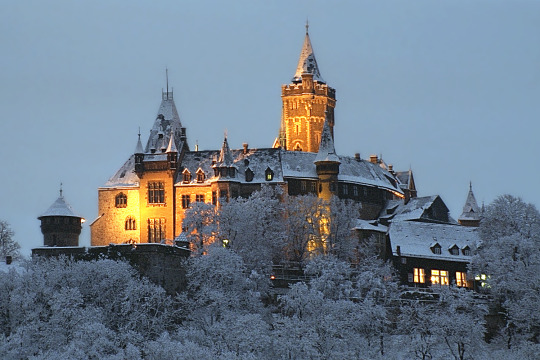
Wernigerode Castle in winter Harz mountains, Germany. https://commons.wikimedia.org/wiki/User:Tillea
#wernigerode#sachsen anhalt#deutschland#wikipedia#wikimedia commons#wiki#germany#harz#harz mountains#harz gebirge#photograph#photography#castle#burg#schloss#architecture#architektur#europe#medieval#historic buildings#east germany#ostdeutschland#northern europe#winter#winter landscape#winter aesthetic#snow#towers#festung#fortress
57 notes
·
View notes
Text
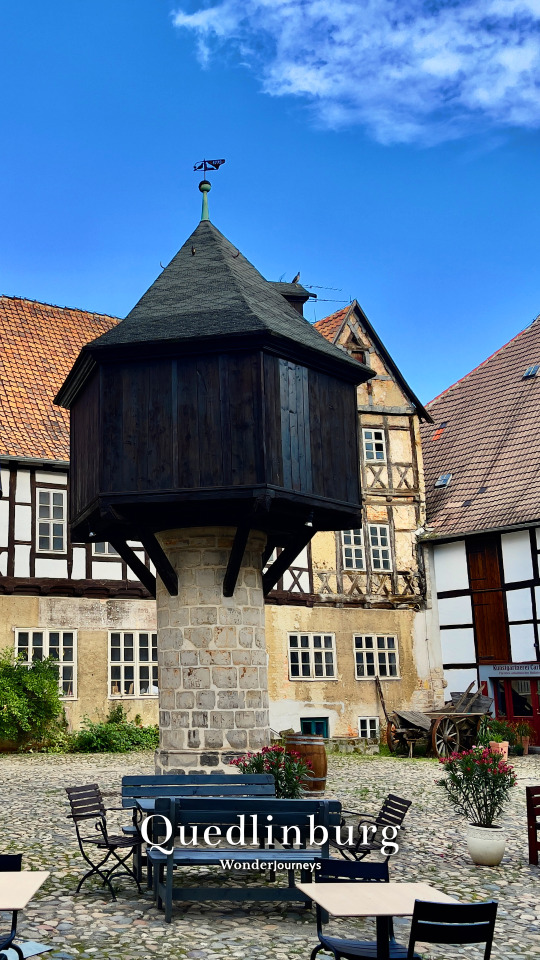
Quedlinburg - Harz Germany - Adelhof

Beilstein - fairytale hidden gem on the moselle river
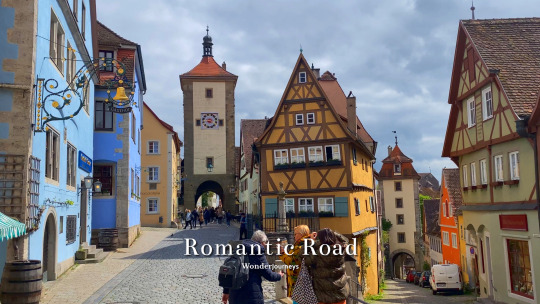
Romantic Road Germany - Rothenburg ob der Tauber
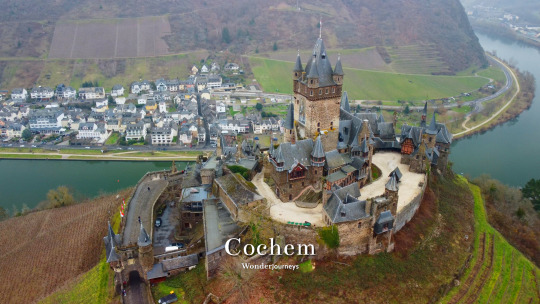
Cochem Castle - wine region - moselle river - Germany

Wernigerode - Harz Germany
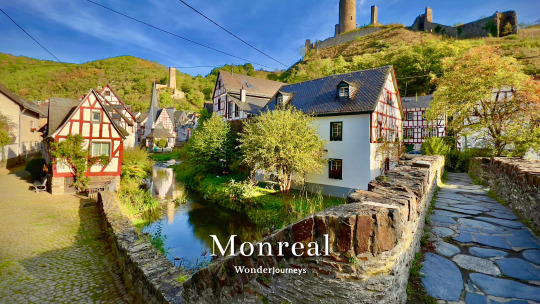
Monreal - Eifel Germany

Freudenberg, Germany. In the snow
Architecture of Germany
Enjoy the Romantic Road in Bavaria Germany ::
youtube
#architecture#germany#travel#deutschland#visit germany#hidden gems#unesco#half timbered#ostern#osterferien#springtime#summer#rothenburg#rothenburg ob der tauber#wernigerode#quedlinburg#harz#eifel#monreal#cochem#castle#cochem castle#beilstein#moselle#wine#wine region#romantic road#romantische strasse#wanderlust#easter
12 notes
·
View notes
Text
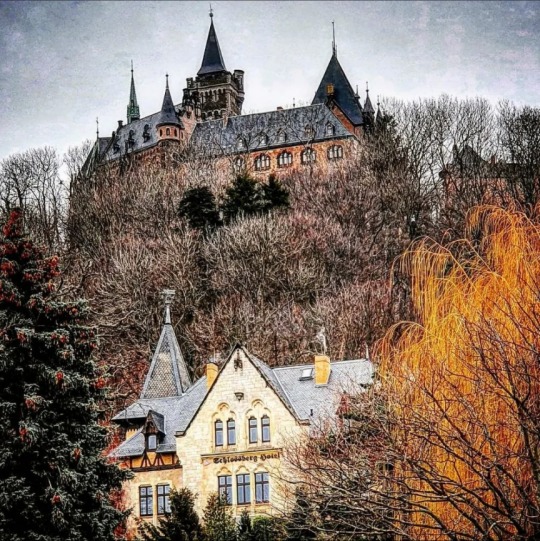
Wernigerode Castle, Saxony-Anhalt, Germany
(zauberhafte.orte)
#gothic#gothic architecture#gothic castle#gothic revival#neo gothic#fall#autumn#wernigerode#saxony anhalt#sachsen anhalt#germany#deutschland
18 notes
·
View notes
Text
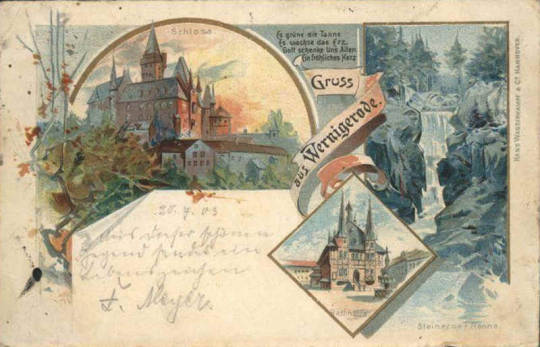
WERNIGERODE -> GERMANY
#Wernigerode#castle#zamek#Schloss#post card#postkarte#litografia#kartka#lithograph#ansichtskarte#litho#niemcy#germany#gruss aus
1 note
·
View note
Text

WERNIGERODE -GERMANY
0 notes
Text
Wernigerode, the rounded castle
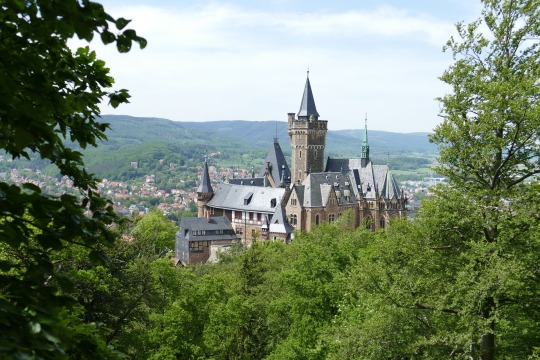
The Wernigerode Castle in the Harz Mountains in eastern Germany is characterised by its rounded shape, the result of a renovation undertaken by Count Enrst zu Stolberg-Wernigerode at the end of the 17th century to make it his residence.
The origins of the castle date back to the 12th century and make it a stopping place for German emperors who travelled to the Harz to hunt. It was already built as a fortress at that time, as a place of safety for the lords of the Emperors of Germany.
The alterations that took place over the centuries meant that in the 15th century Schloß Wernigerode acquired late Gothic features, and in the 16th century it was rebuilt in the Renaissance style, of which a stepped tower still remains.
The Thirty Years' War in the 17th century, when the castle already had clear Baroque features, affected the fortress, and so Count Ernst undertook the renovation, which began to introduce the main features that would give the castle its uniqueness.
Around 1716, the castle church, documented since 1259, was converted into a parish church by order of Count Christian Ernst in order to provide religious services for all the inhabitants of the castle and the inhabitants of the town of Wernigerode. The present church dates from the 1870s and 1880s, as the baroque building was demolished in 1870 to built the new on its site. The parish church ceased to function in 1952 under the East German communist regime.
However, the present construction of the fortress is the result of a more deep reformation due to the social rise of Count Otto zu Stolberg-Wernigerode, who in 1867 became the head of the Prussian province of Hanover, then Prussian ambassador to Vienna, and then Vice-Chancellor of the Reich and Deputy Prime Minister of Prussia as Otto von Bismarck's right-hand man.
The architect Carl Frühling was in charge of interpreting the historicism of the time, and the castle underwent a major transformation between 1862 and 1885, allowing its profile to be admired from a great distance, as well as giving it an interior full of details.
1 note
·
View note
Text
Wernigerode Castle













Wernigerode Castle is located in Saxony-Anhalt, Germany. The Neo-Romantic castle sits in the Harz Mountains above the town of Wernigerode and originally served as a medieval stronghold for German emperors during their hunting excursions in Harz. The castle was rebuilt into a Renaissance fortress in the 16thcentury, and reconstructed in the baroque style in the late 17th century after the Thirty-Year War damaged much of it. In the 18th century, Count Ernest of Stollberg-Wernigerode reconstructed the castle as a romantic residence for himself; his modifications of the castle were extensive. The present-day building was completed in the late 19thcentury for Count Otto. The castle changed hands numerous times and served as the seat of government on and off throughout its history. The complex includes a beautiful courtyard, stone turrets, a church built in 1880, opulent living quarters, and a panoramic view of the surrounding hills and city. Portions of Wernigerode Castle are open to the public.
1 note
·
View note
Text
Heritage News of the Week
Discoveries!
It's been a big month for finding lost explorers!
In September, on the broad expanse of the Central Rongbuk Glacier, below the north face of Mount Everest, a National Geographic documentary team that included the photographer and director Jimmy Chin, along with filmmakers and climbers Erich Roepke and Mark Fisher, examined the boot more closely. Inside, they discovered a foot, remains that they instantly recognized as belonging to Andrew Comyn Irvine, or Sandy, as he was known, who vanished 100 years ago with the famed climber George Mallory.
How the excavation of Shakespeare’s Curtain theatre has changed stage history
Recovery of stage foundations, which will be part of new London museum, has changed understanding of theatre development
Remnants of an ancient Greek settlement unearthed in a Croatian village
In the nearby town of Stobreč, archaeologists have excavated a three-meter tall, 70-meter long wall buried beneath the town’s modern-day architecture. More excitingly still, they revealed that this wall was part of an ancient Greek settlement known as Epetion.
Indian archaeologists unearthed over 4,000-year-old war chariots in Royal Tombs, in the northern state of Uttar Pradesh
The discovery of chariots in the Indian subcontinent is a first, according to the researchers.
Archaeologists map the submerged landscape around Grado
A team of archaeologists from the University of Udine have mapped the submerged landscape between the sea of Grado and Roman Aquileia.
DNA study confirms Christopher Columbus’s remains are entombed in Seville
Scientists have ‘definitively’ proved identity of remains – with navigator’s precise origins to be revealed
2,800-year-old burial mound with sacrifices unearthed in Siberia is eerily similar to Scythian graves
A 2,800-year-old burial in Siberia that contains the remains of an elite individual, who was buried with at least one sacrificed human and 18 sacrificed horses, appears to belong to a culture closely related to the enigmatic Scythians, a new study finds.
1,600-year-old Roman military structure unearthed in Hasankeyf, Türkiye
Archaeologists from Artuklu University have uncovered the remains of a 1,600-year-old Roman military structure during excavations in the ancient town of Hasankeyf, southeastern Türkiye.
New discoveries at Himmelpforten Monastery
Archaeologists from the State Office for Monument Preservation and Archaeology (LDA) of Saxony-Anhalt have been excavating the Himmelpforten Monastery near the town of Wernigerode, Germany.
Archaeologists unearthed ruins of 7th century BC Phrygian religious site
Archaeologists unearthed ancient ovens and hearths, thought to be belonging to Phrygian who inhabited the region around the seventh century BC, during excavations at Midas Castle in Eskisehir in northwestern Türkiye.
Archaeologists uncover traces of real world Ragnarök
Archaeologists have found traces of a climate disaster 1500-years-ago that might have inspired the legend of Ragnarök from Norse mythology.

Illegal excavations in central Naples uncover rare 11th-century medieval church
An entrepreneur was conducting illegal excavations at the hitherto unknown archaeological site, damaging and looting the area, which has now been seized by the Carabinieri. The rediscovered church is a rare example of medieval art of which very few models are known in the whole of Italy.
Archaeologists unearthed an ‘ancient pub’ on the site of the multi-million-pound Dover Beacon project
Archaeologists have uncovered what they believe to be an ancient pub on the site of the multi-million pound Dover Beacon project in Dover, a coastal town in Kent in southeastern England.
Evidence of Assyrians' conquest of Holy Land discovered in Jerusalem
The discovery of a building that the Assyrians likely tore down in the eighth century B.C. reveals the political dynamics of that age in Jerusalem.
Ancient shipwreck carrying rare orichalcum to be recovered
The ship and its cargo were found exceptionally well-preserved at a depth of 1,000 feet, providing rare insights into ancient Greek seafaring, trading networks, and shipbuilding technology.
Peru archaeologists find 600-year-old child sacrifice site
In a vacant lot outside the town of Trujillo, in northern Peru, archaeologists have unearthed the remains of nearly four dozen children -- all thought to have been ritually sacrificed more than 600 years ago.
Ceramic urns discovered in Przeworsk culture cemetery
Archaeologists from the University of Lodz have discovered ceramic urns at a Przeworsk culture cemetery near Kutno in Lodz Province, Poland.
Historic city's original boundary excavated
Experts found the remains of a ditch, indicating where the defences originally stood, confirming that Oxford in about 900AD was much smaller than the medieval town it went on to become.
Network of subterranean chambers and tunnels identified beneath Mitla
Archaeologists from the Lyobaa Project have confirmed a network of subterranean chambers and tunnels beneath Mitla – The Zapotec “Place of the Dead”.
5,000-year-old stone-paved cellar surprisingly discovered under a Neolithic dwelling in Denmark
An excavation of a 5,000-year-old Neolithic dwelling on the Danish island of Falster surprisingly revealed a stone-paved cellar.
Basement renovation in home near Paris unearths cemetery spanning 700 years, with Roman-era graves
A homeowner doing a basement renovation project near Paris unexpectedly found a skeleton, which later led to the discovery of nearly 40 burials, some of them dating to Roman times.
God I wish this was me
6,000-year-old Neolithic long house uncovered in Sandomierz-Mokoszyn
Excavations in Sandomierz-Mokoszyn (Świętokrzyskie), Poland, have uncovered one of the earliest examples of a Neolithic “long house” in the Sandomierz Upland, dating back to 5300-4900 BC.
Study reveals new insights into Native American shell-ring villages
According to a paper published in the journal scientific reports, these settlements represent the earliest known year-round Native American communities in the Eastern Woodlands and were established in fluctuating coastal environments.
Museums
Charity launches fundraising appeal to care for and document eclectic store of more than 1 million artefacts
Inside the Met’s renovated Michael C. Rockefeller Wing, which is set to open May 2025
The Metropolitan Museum of Art recently offered a preview of its renovated Michael C. Rockefeller Wing, taking journalists on a tour of the new space, set to open next May.
Edinburgh history museum to remain closed over funding gap
Campaigners have criticised the closure of the People's Story museum as an attempt to 'expunge' Edinburgh's working class history.
British Museum’s splashy new show on the Silk Road meets with controversy
The British Museum’s exhibition “Silk Roads,” studying the famous ancient trade route, has opened to rave reviews from critics, but one art historian is taking issue with the museum’s accounting of the globe-spanning phenomenon, laid out through some 300 objects from various lenders and the institution’s own collection.
Repatriation
Legal title of a work by Claude Monet, seized by the Nazis from a Jewish couple who fled Vienna in 1938 to avoid persecution, has been returned to their heirs after federal authorities obtained it.
Danish family seek to return Etruscan objects bought from boot of car in Italy
Bent Søndergaard’s children say they want to carry out ‘his final wishes’ and send back antiquities he bought in 1960s
Maqdala shield will be repatriated to Ethiopia after exhibition in Ohio
A 19th-century shield withdrawn from public auction in the UK earlier this year will be repatriated to Ethiopia.
Iran police seize two golden Elamite masks more than 2000 years old
The Bushehr provincial police chief seized some holy relics, including two more than 2,000-year-old golden masks, in an operation against antiquities smugglers.
Thirteen ancient Egyptian artifacts seized by US government at JFK airport
Between 2020 and 2021, the US government seized 13 ancient Egyptian artifacts at JFK airport, including a 5,200-year-old vase, according to a legal documents filed earlier this month.
Heritage at risk
Lebanese Culture Minister Mohammad Mortada has called for international action after an Israeli airstrike hit perilously close to Baalbek, a triad of Imperial Roman temples and UNESCO World Heritage Site in northern Lebanon.
Royal mausoleum found daubed with graffiti
Vandals spray-painted graffiti on a mausoleum for Ryukyu Kingdom royalty here, known as “Urasoe Yodore,” officials said.
Don't do this
Inuit Broadcasting Corporation archiving work at risk because of funding crunch
The Inuit Broadcasting Corporation (IBC) says years of Inuit history and knowledge could be lost because it doesn't have the funds to continue much of its archiving work.
Odds and ends
After more than 100 years hidden in the icy waters of Antarctica, Sir Ernest Shackleton’s ship Endurance has been revealed in extraordinary 3D detail.

'Churchill's Spaniards': The untold story of the fighters who fought Hitler
A new book by Séan Scullion, "Churchill’s Spaniards - Continuing the Fight in the British Army 1939-46", tells the story of about 1,200 Spaniards who enlisted with the British army to fight Hitler in the war.
Edinburgh heritage campaigners rail against Netflix One Day plaque plan
Proposal to commemorate TV series on historic tenement raises concerns about increase in selfie-tourism in city
#heritage news of the week#archaeology#history#museums#everest#endurance#maritime history#shipwreck#mythology#gif
11 notes
·
View notes
Text
Germany is full of hidden wonders and architectural gems to discover. Here are the 9 must-sees to add to your bucket list.
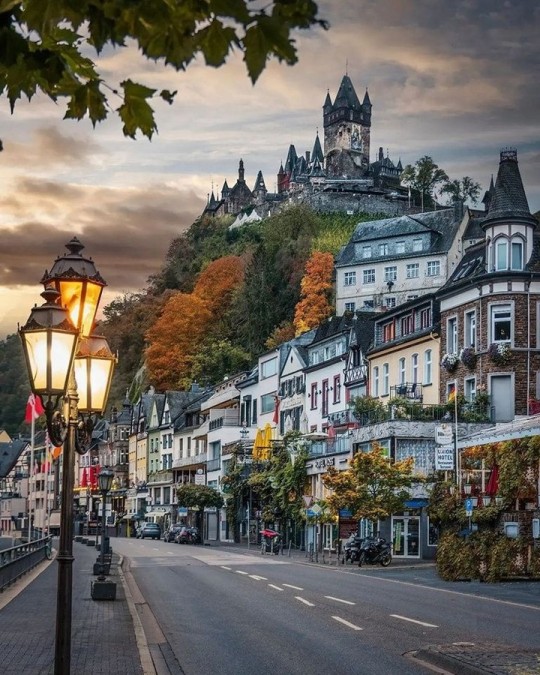
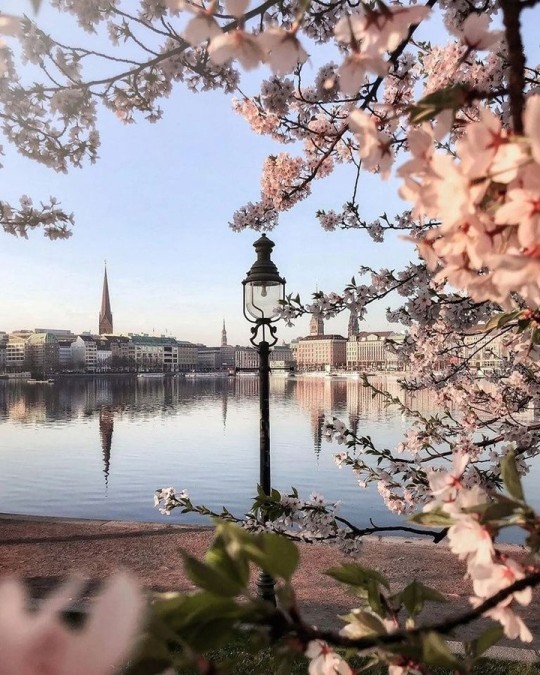
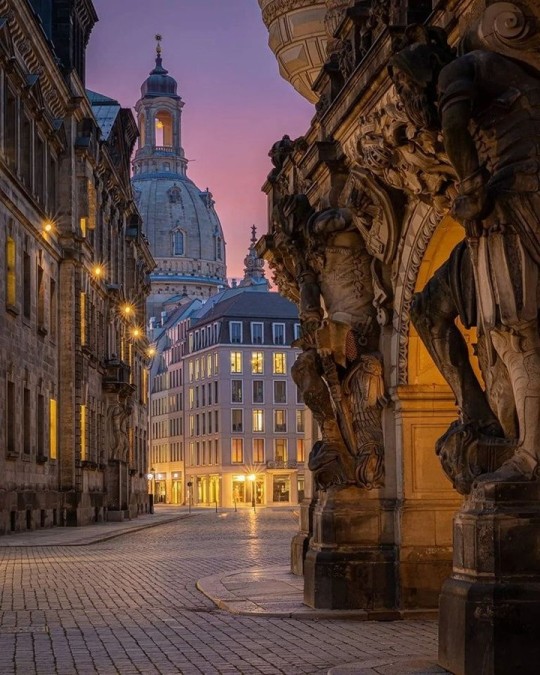
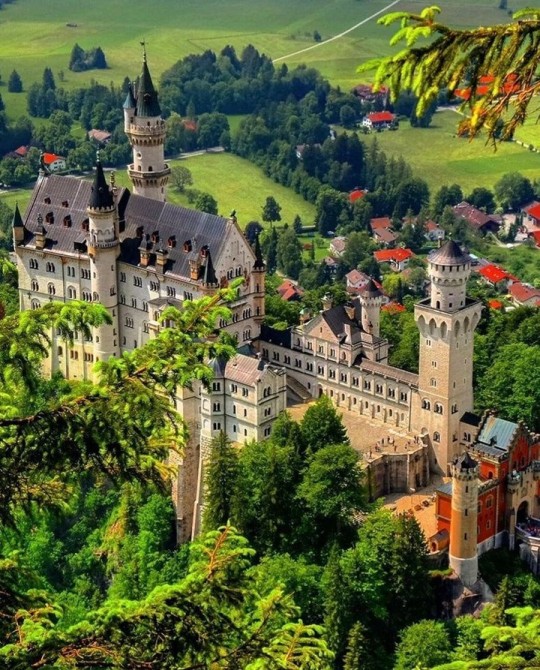

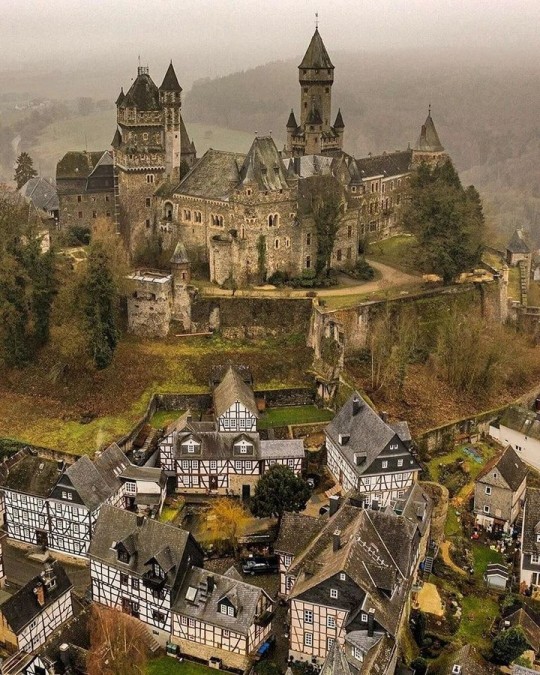
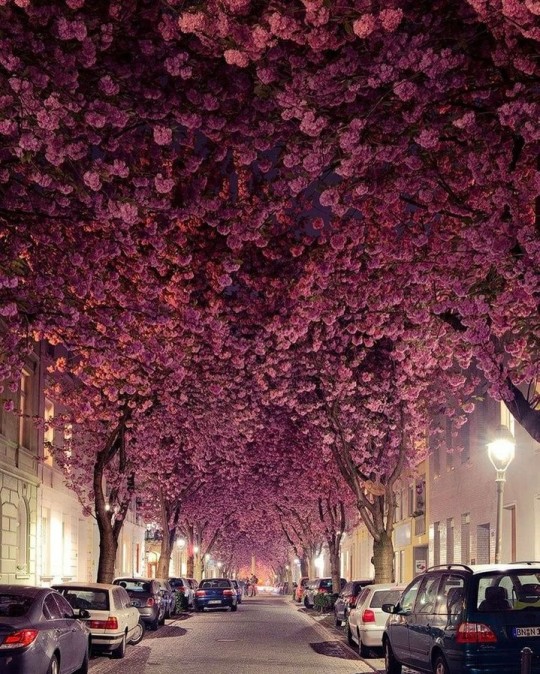
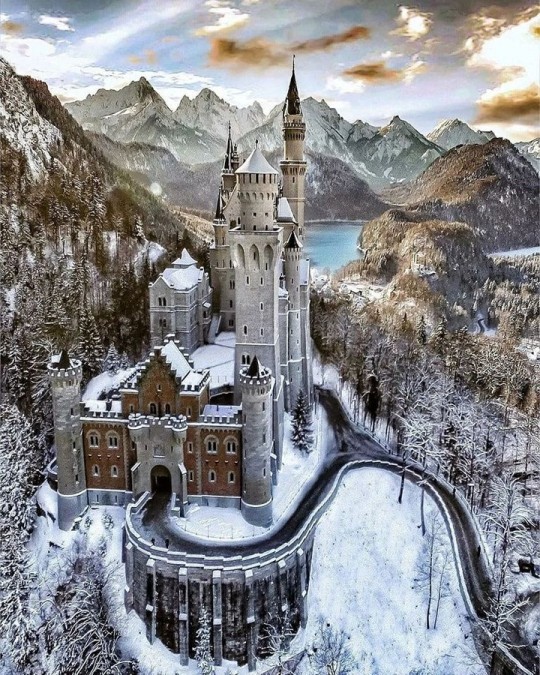
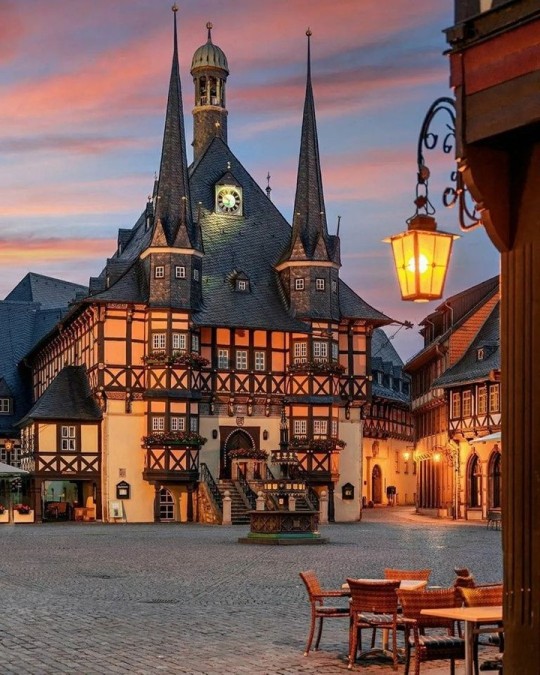
Cochem: This charming little village on the Mosel River is a historical gem, surrounded by green hills and vineyards.
Hamburg: Germany's second largest city is full of nightlife, culture and cuisine. Don't miss the historic harbor and lively streets.
Dresden: The baroque city of Dresden is famous for its historic monuments, museums and royal gardens. The Frauenkirche, rebuilt after the war, is a must-see.
Schloss Neuschwanstein: This fairytale castle, located in the Bavarian mountains, is known to be the inspiration for Sleeping Beauty Castle.
Rothenburg on der Tauber: This charming medieval town, located on the romantic tourist route, is a must-see for history and architecture lovers.
Schloss Braunfels: This fortified castle in the Lahntal valley is a medieval gem, surrounded by forests and hills.
Bonn: The former capital of West Germany, Bonn is a lively university town with many museums, galleries and gardens.
Wernigerode: This charming little mountain village is famous for its colorful houses, cobblestone streets and medieval castle.
Neuschwanstein Castle is a true architectural gem. With its white towers, crenellations and pointed roofs, it strongly inspired Disney for the castle of Sleeping Beauty.
Don't forget to share with a friend
Follow :- @patriot_passports ................................................................. Credit :- @bestcitiesofeurope
1. Cochem Castle in Cochem by @der_heimatfotograf 2. Hamburg by @eskimo 3. Dresden by @s.rose_fotografie 4. Schloss Neuschwanstein by @vpruntsev 5. Rothenburg on der Tauber by @voyageblonde 6. Schloss Braunfels by @pierrebrauer 7. Bonn by @andredistel 8. Wernigerode by @der_heimatfotograf 9. Neuschwanstein Castle ~ Once upon a time... by @alaa_oth
#DiscoverGermany#GermanWonders#Cochem#Hamburg#Dresden#NeuschwansteinCastle#Rothenburg#BraunfelsCastle#Bonn#Wernigerode#Germany#Alemania#Germania
3 notes
·
View notes
Text
Quedlinburg (& Wernigerode)
Well then. Quedlinburg and Wernigerode are both small cities with a pretty old citycore in the Harz region in Germany, and were part of a bunch of wealthy cities in that area in the middleages. Other nearby cities are Blankenburg and Halberstadt (the latter I visited last year I think... or the year before). The Harz itself is a mountain range in the middle of Germany, and is most famous for the Brocken where it is said that the witches go there to dance with the devil. You can go up there and have a lovely view over mostly flat landscape, but I have a fear of heights and also don't like the cold very much, so no Brocken visit for me. Quedlinburg is the city where Heinrich (or Henry) I of Saxony was declared king in 919, ...or at least it is said that he got informed about that in Quedlinburg. Maybe. No one knows really. Anyway, he seemed to have liked the city quite a lot and even wanted to get buried there. His other (maybe even greater) hobby was... birds. And catching them. Which led to him carrying the name Heinrich der Vogler (Henry the birdcatchingman basically, as seen clearly in the picture below).

Nevertheless he was the Founder of the later very important Ottonen kings and Kaisers (who were mostly named.. Otto -> Otto I, Otto II, Otto III). And since European kings were traveling a lot to keep their land and people in check, they needed castles to rest inbetween. Which led to the fortification and building of several castles fit for a royal shortterm stay, in German called Königs- or Kaiserpfalz. One of those is the castle on the steep hill in Wernigerode, another is in Blankenburg.



But back to Quedlinburg. Quedlinburg has no real castle. At least not in the sense of a Pfalz. Instead it has the "Collegiate Church" St. Servatii. Built on a hill it was originally planned by Heinrichs wife to be the final resting place for herself and Heinrich. Which did not work out. He was later relocated and got lost and no one knows where his corpse ended up. Anyway, to keep the memory of this birdfriendly man St. Servatii was led by women who did just that - pray for his soul and keep the important things Heinrich and his progeny did in a huge book. All these women came from royal families and had very good relationships to all sorts of wealthy people and had the upper hand when it came to the city management of Quedlinburg. Not that the wealthy people in Quedlinburg really liked that. During Hedwig of Saxony's "reign" (1458-1511) Quedlinburg wanted to become independent since trade became more important than the church (remember: Reformationtime had already started). So Hedwig called her big brothers, the knights and kings and whatnot of Saxony, and made them fight against the townfolks. As a powerful symbol they destroyed the Roland statue at the market, which was a sure sign of city independence and tradevalue, and also showed an alignment with the northgerman Hanse (nearly all big and small cities have a Roland somewhere). But well, that didn't last very long. The Roland came back a few years later.

Today St. Servatii is a romanic church with a crypta (one of the very few things still existing in an early medieval frankish-style), joined by a huge castle-like building that changed many times over the years, and several gardens. It is also surrounded by a huge wall.



I somehow didn't take a single photo of the church+buildings from the outside. Sorry. But the city itself is more pretty anyway. Get some inspiration from the following pictures!




Over 60% of all Fachwerk-houses were renovated during the last 30 years, and made fit for modern living. Really, each time I woke up and looked outside I thought I woke up in 1400 something. The bells of the churches signaled when to open or close businesses and after dark the streets were even more empty than during the day (which is a very different experience in summer, trust me). But holy hell, you better not break your leg while you live there. The stairs are... a thing. It's all very crooked and narrow.

We were very lucky to be there for market day both in Quedlinburg and in Wernigerode. They sold a veeeeeeeeeeeeeeery tasty salami made from stag, and we tried a horsemeatball (tasty!). And don't get me started on all the little shops you can browse through. Some are just rubbish, but they have a very good teashop and we spend nearly 75€ on stuff in another shop that sold all kinds of chocolate, sweets, writing material and pretty things. We also had one dinner in the Ratskeller (the cellar below the townhall where the best wine and goods were stored), it was delicious. As were all the cakes in the shops!
All in all: I loved it. It was incredibly cold, but sunny. And with less people about it was an absolute joy to walk through both cities. Lastly, a picture of the townhall in Wernigerode (with old people, ...sorry old people but if you constantly run into my pictures I can't do anything about that).

4 notes
·
View notes
Note
hiii emy i hope you are ok lately, i love seeing ur presence on the timeline
is there an underrated part of germany u would recommend ppl check out
what are some ways you give yourself grace / are gentle to urself?
what is your favourite playlist lately
-- wiz not on anon lmfao
hi wiz! i'm doing okay, just ready for exam season and this semester to be over. this got very long, so my answers are below the cut 🫠
1. there actually are a lot of beautiful places in germany! you can get a little bit of everything here, coasts, lakes, castles, stalactite caves, mountains, beautiful old towns and so on and so forth, it just depends on where you are.
some castles: burg hohenzollern, schloss neuschwanstein (1st picture), reichsburg cochem, schloss schwerin, schloss braunfels, schloss celle, schloss nordkirchen, schloss drachenburg (2nd picture), burg eltz (3rd picture), schloss moritzburg, schloss wernigerode (schloss is german for castle, if that wasn't obvious by now)



picture source
✨️nature✨️: the devil's wall in the harz mountains (rock formation of sandstone and chalk), the stubbenkammer and the königsstuhl on rügen (two most famous formations in the chalk cliffs), the saalfeld fairy grottos (stalactite cave; 1st picture), the bastei in saxon switzerland (sandstone formation and natural monument; 2nd picture), the hainich national park (beautiful deciduous forest, unesco world heritage site), the old castle rocks in the palatinate forest (group of red sandstone rocks), the sea of rocks in the oden forest (large block accumulation of dark gray quartz diorite), the extern stones in the teutoburg forest (striking sandstone rock formation), the morsum cliff on sylt (steep coast in a unique geotope in europe), the lüneburg heath (flat undulating heath, geest and forest landscape; 3rd picture) (never realised we had so many rocks lol)



picture sources
some waters: the triberg waterfalls in the black forest (highest waterfall in germany), the königssee in the berchtesgadener land (1st picture), the mecklenburg lake district (including the müritz, the biggest lake in germany), the blautopf in the swabian alps (karst spring with intensely blue water due to its lime content), the waldnaab valley in the upper palatinate, lake constance (in the foothills of the alps between germany, austria and switzerland), the eibsee in the wetterstein mountains (2nd picture) (see is lake in german)


picture sources
old towns (with timbered houses and all that jazz): quedlinburg, heidelberg, rothenburg ob der trauber (1st picture), lübeck, erfurt, meersburg, trier, dinkelsbühl, marburg, freiburg, wismar, bamberg (2nd picture)

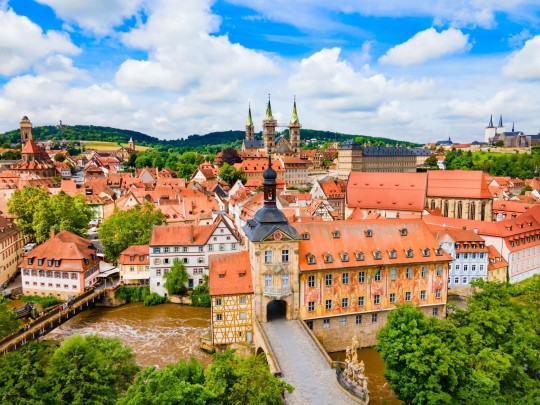
picture sources
there also are plenty of nice museums and so much more, but this is already way too long. in short, you'll find a lot of gems aside from the big cities (which usually really aren't that great lmao).
2. permitting myself to take longer for things than other people. for example, i've recently (mostly) come to terms with the fact that i will need significantly more than the three years standard period of study to get my bachelor's degree, for a bunch of reasons, and i am constantly reminding myself that that's nothing to be ashamed of. my reasons are valid and taking the time i need does not make me less qualified to get this degree.
3. i've been making a lot of f1 playlists lately which is a lot of fun and my favourite is one i haven't completely finished and posted yet 🤭 this one is for a much beloved ship so i want it to be as accurate as possible.
thank you for the questions <3
anonymously message me (3) things you want to know about me.
3 notes
·
View notes
Text

Wernigerode castle
2 notes
·
View notes
Text

Wernigerode, Germany. Kochstrasse

Old noble house. Wernigerode, Harz, Germany

Wernigerode Castle.
Wonderful walking tour of Wernigerode ::
youtube
#travel#youtube#wanderlust#wonderjourneys#tourism#touristdestination#germany#drone#deutschland#dji#wernigerode#harz#saxonyanhalt#medieval#architecture#quedlinburg#spring is coming#spring#enjoy#beauty#relax#travelling#vacation#holiday#Youtube
7 notes
·
View notes
Video
CU8A1624-Verbessert-RR.jpg von Rainer Über Flickr: Wernigerode Castle
0 notes
Text
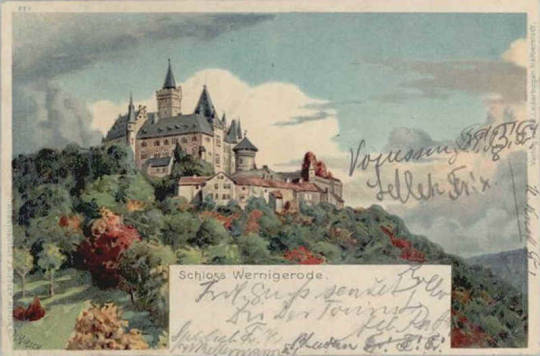
Schloss / castle in WERIGERODE -> GERMANY
#Wernigerode#Schloss#zamek#castle#postkarte#post card#litografia#kartka#lithograph#germany#niemcy#cartolina#ansichtskarte#carte postale#litho
1 note
·
View note
Video
instagram
Castle Werningerode, Harz Mountains, State of Saxony-Anhalt, Germany
Goodnight, dear world :)
#Castle Wernigerode#Harz Mountains#Harz#Sachsen-Anhalt#Deutschland#Germany#Saxony-Anhalt#Schloss Wernigerode#Goodnight#Gute Nacht
10 notes
·
View notes
